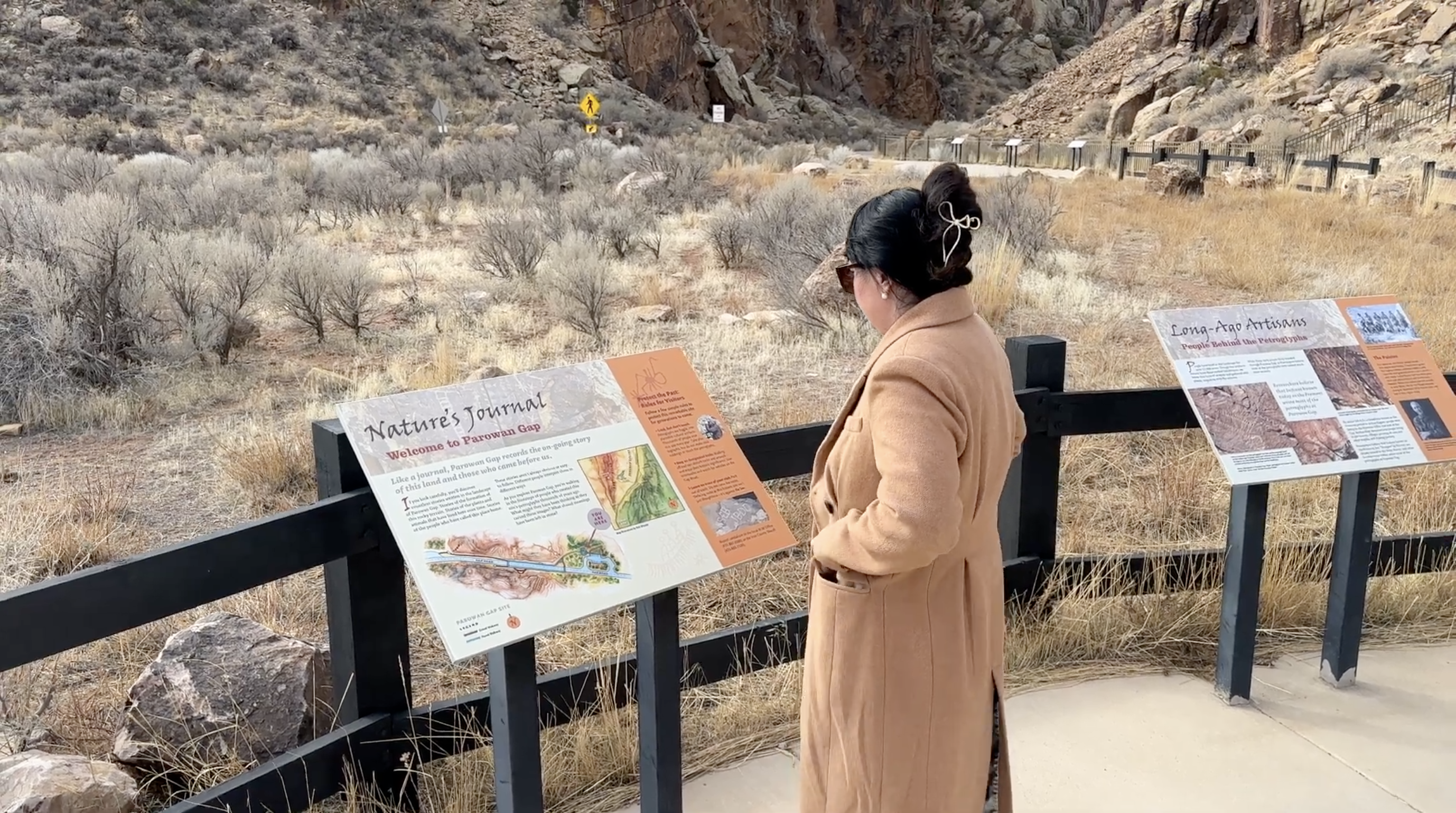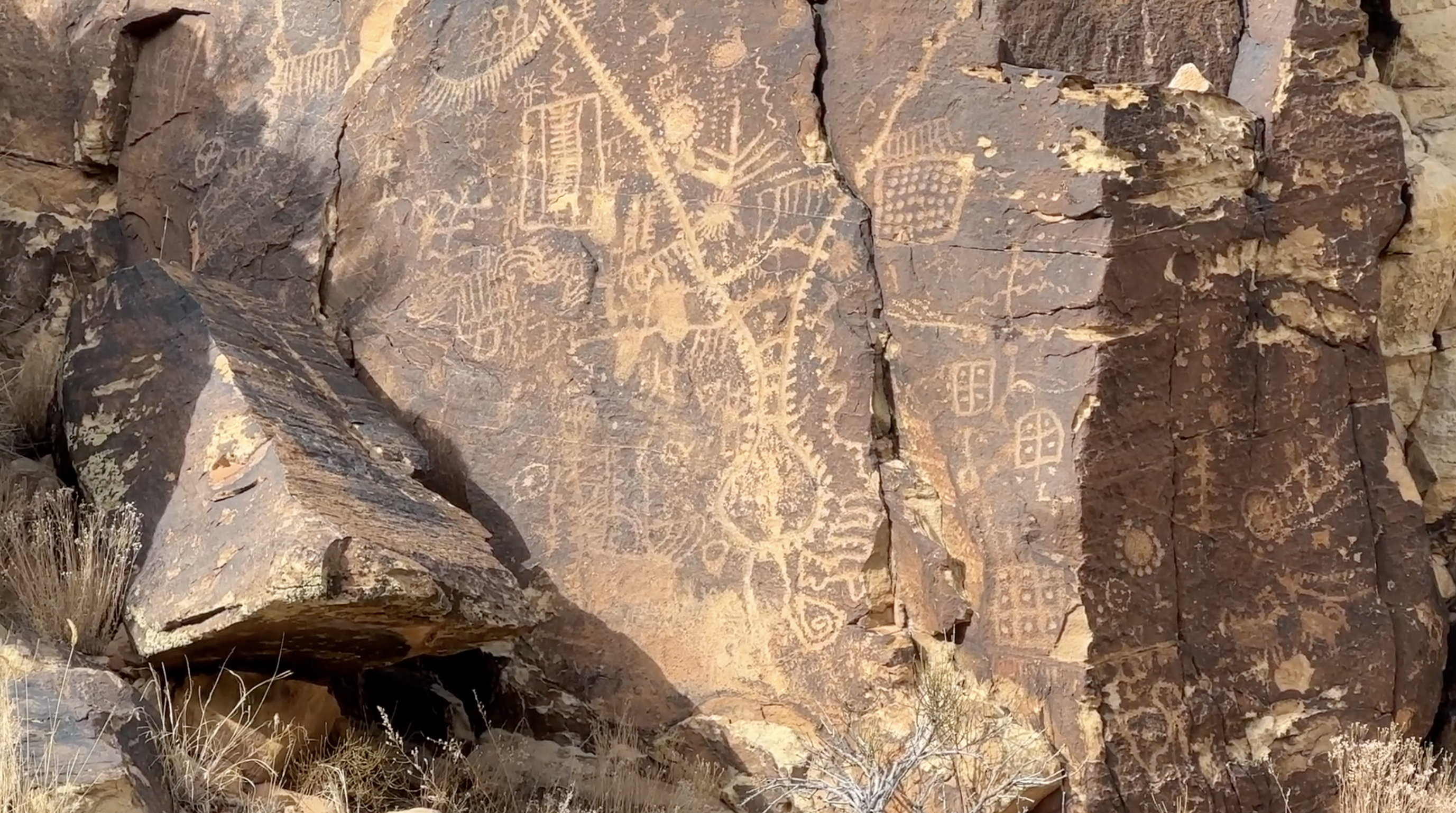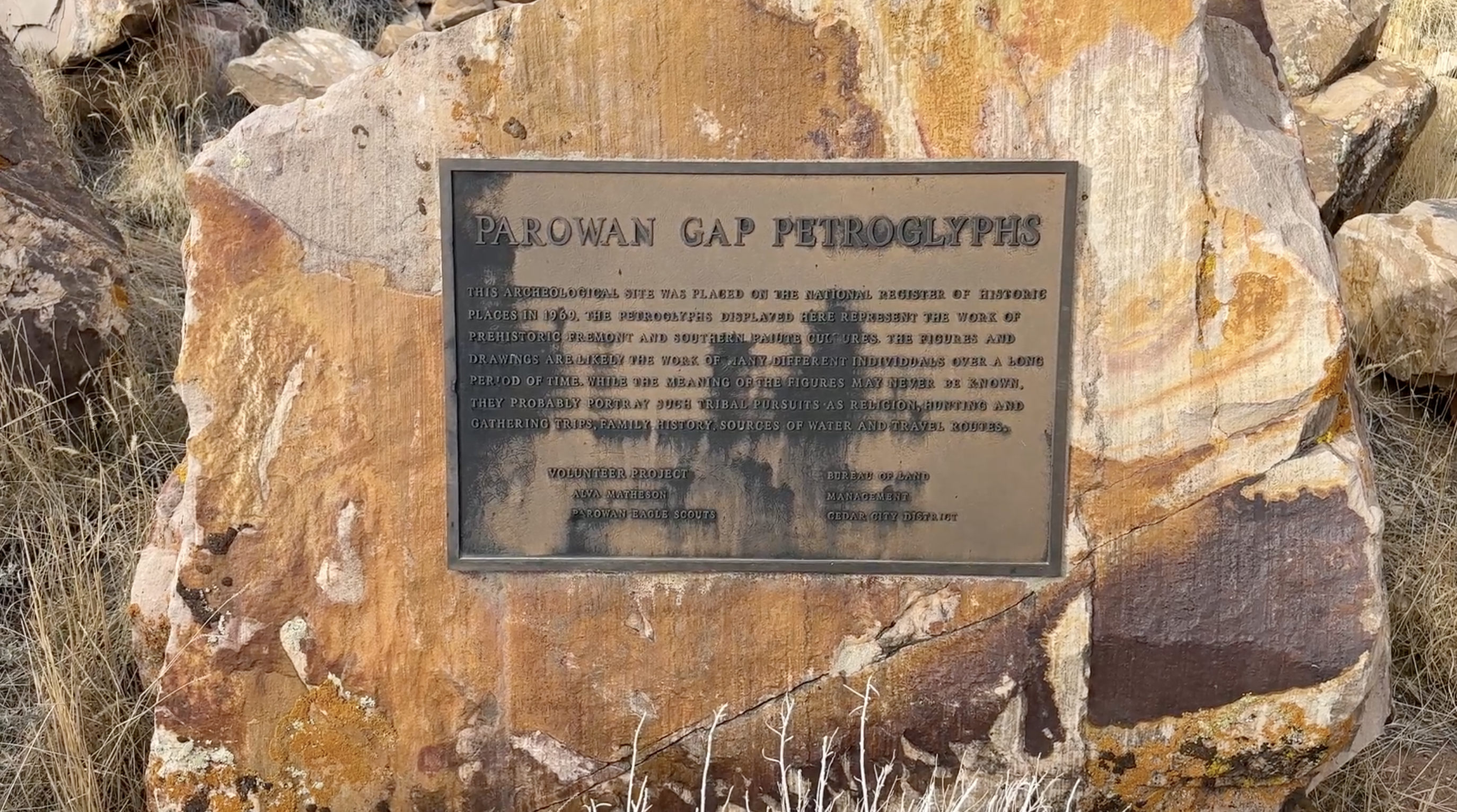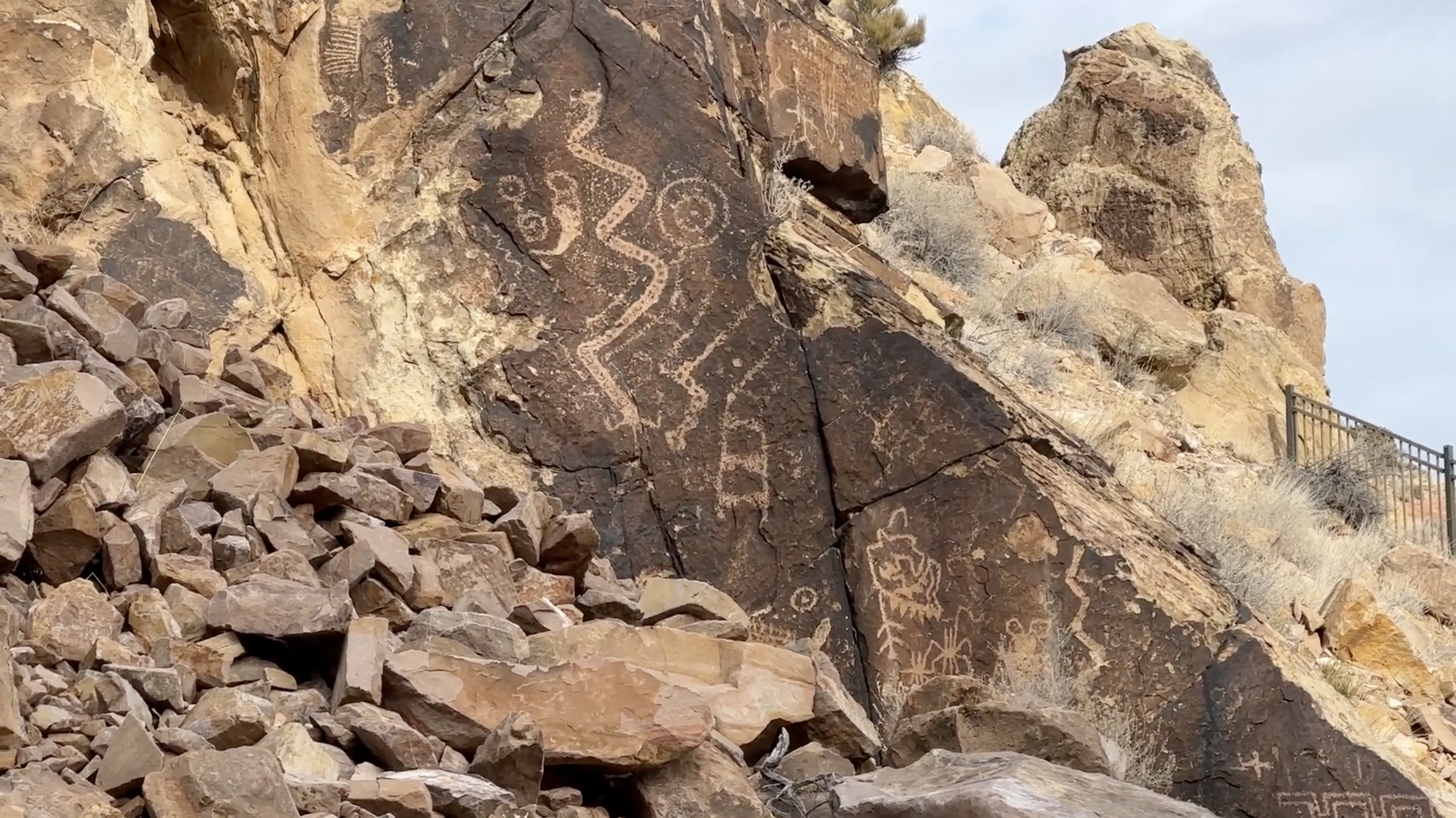In this Parowan Gap petroglyphs episode of “Design Around the World,” I take you to southern Utah, where my husband and I explored the ancient petroglyphs carved into the canyon walls. This unique site offers fascinating insights into the principles of design that still influence modern graphic design today.
Watch the entire youtube video here: (link)
The Parowan Gap: Ancient Design, Modern Lessons
Nestled in the rugged landscape of southern Utah lies the Parowan Gap, a geological wonder and a sacred site steeped in history. Famous for its V-shaped rock formation and the striking Parowan Gap petroglyphs carved into its sandstone walls, this site offers a glimpse into the creative minds of Native American cultures that lived here over a thousand years ago. These petroglyphs are more than just ancient art; they embody timeless principles of design and storytelling that continue to resonate in modern graphic design today.

A Natural and Cultural Wonder
The Parowan Gap is a narrow canyon, formed by an ancient river cutting through the Red Hills of southern Utah. This site’s unique features have drawn people for centuries, but the true allure lies in the petroglyphs adorning its walls. Created by the Fremont and Ancestral Puebloan peoples between 500 and 2,000 years ago, these carvings include symbols like spirals, geometric shapes, human figures, and celestial markers. Scholars believe these symbols may have served as a celestial calendar, tracking the sun, moon, and stars, further reinforcing the Parowan Gap petroglyphs as an ancient design masterpiece.
The Purpose Behind the Symbols
One of the most fascinating aspects of the Parowan Gap petroglyphs is their intentionality. Each carving was purposefully placed to mark an event or communicate a message. Researchers have identified carvings aligned with solar and lunar events, such as solstices and equinoxes. Some markings are designed so sunlight strikes them on significant days, showcasing the deep understanding of astronomy and the ability to translate knowledge into visual forms—core principles of design that still apply today.

The Parallels to Modern Graphic Design
At first glance, the ancient Parowan Gap petroglyphs might seem far removed from the digital designs of today. However, the design principles that guided these ancient artists are remarkably similar to those used by graphic designers today. Let’s explore some of these parallels:
1. Purposeful Design
Every petroglyph at Parowan Gap had a clear intent. Whether marking an astronomical event or telling a story, each carving was purposeful. Modern graphic design similarly operates on the principle that design must serve a purpose. Designers work to communicate a message, whether through logos, websites, or posters.
2. Simplicity and Clarity
The Parowan Gap petroglyphs are known for their simplicity. With basic shapes and lines, these ancient artists conveyed complex ideas. This mirrors the modern design principle of “less is more,” where simplicity and clarity ensure the message is easy to understand and impactful.
3. Use of Space
The creators of the Parowan Gap petroglyphs made deliberate use of the natural rock formations. By placing carvings in strategic locations, they maximized their visibility and impact. In modern design, this translates to the effective use of negative space, where every element of a design contributes to the overall composition.
4. Timeless Storytelling
Perhaps the most compelling parallel is the emphasis on storytelling. The petroglyphs at Parowan Gap tell the stories of their creators’ lives, beliefs, and environment. Similarly, modern graphic design often relies on visual storytelling to convey a brand’s message or narrative.
Lessons from the Past
The petroglyphs of the Parowan Gap remind us that design is not just a modern invention but a universal practice. These ancient carvings reveal how design can transcend time, illustrating that at its core, design is about connection: connecting people to ideas, each other, and the world around them. The lessons learned from these ancient Parowan Gap petroglyphs still guide modern designers in crafting meaningful and impactful work.

Visiting the Parowan Gap
The Parowan Gap is easily accessible from Cedar City, Utah, where visitors can explore interpretive signs that provide insights into the meanings behind the petroglyphs and the cultures that created them. Visiting this site is not just an opportunity to see ancient art—it’s a chance to connect with the origins of design itself.

Conclusion
The Parowan Gap petroglyphs stand as a bridge between the ancient and modern worlds. They show us that design is about more than just creating visually appealing works; it’s about communicating meaning in a way that resonates with others. Whether ancient artists carved into stone or modern designers work with digital tools, the goal remains the same: to tell a story, convey an idea, and leave a lasting impression. The Parowan Gap is a testament to the timeless nature of design and an enduring source of inspiration for designers everywhere.
If you want more design inspiration, be sure to subscribe to the channel!
